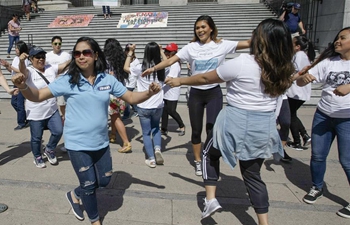WASHINGTON, May 14 (Xinhua) -- American scientists found that restoring hearing was not just about regenerating the lost outer hair cells that can amplify incoming sound, but each of the outer hair cells have to be arranged as a specific branch of a Y-shaped building block.
In a study published on Monday in the journal Proceedings of the National Academy of Sciences, a research team from Massachusetts Eye and Ear Infirmary created a detailed computer simulation of the cochlea and the tiny structures within it to test how different arrangements and malformations of the Y-shaped structures affect hearing function.
They found that the outer hair cells could only produce high hearing sensitivity and frequency selectivity when arranged in their natural configuration with respect to the surrounding structures.
When they altered the geometry and material properties of these structures, the cells' ability to amplify and tune sound was compromised.
According to the researchers, the loss of tiny cells in the inner ear, known as "hair cells," is a leading cause of hearing loss, a public health problem affecting at least one out of three people over the age of 65.
"Our work suggests that, in order for humans to hear well, the outer hair cells in the cochlea not only need to be in good working order, but also need to be connected to other nearby cochlear structures in a very particular way," said the paper's senior author Sunil Puria, a scientist at Mass. Eye and Ear and instructor in otolaryngology at Harvard Medical School.













